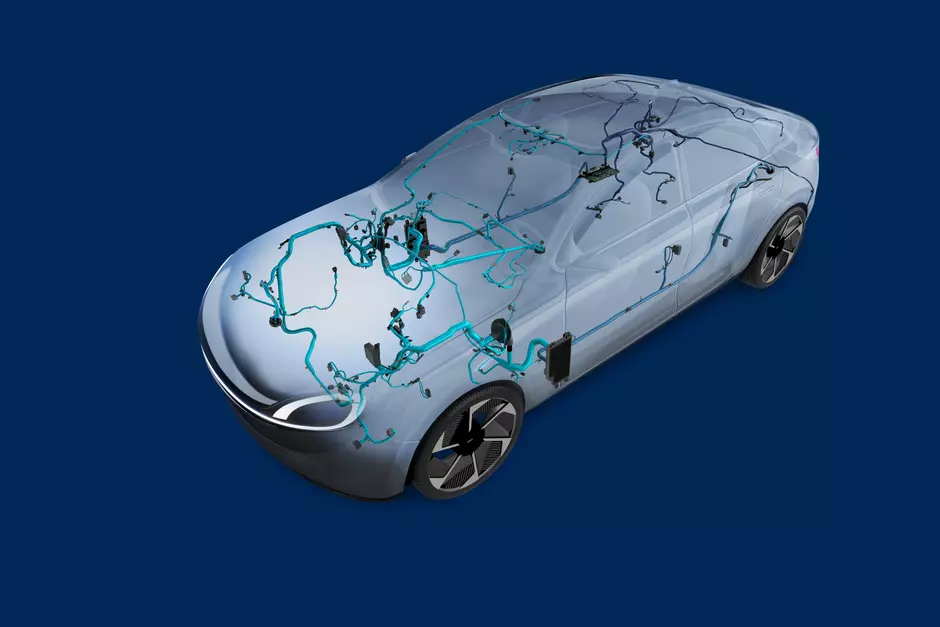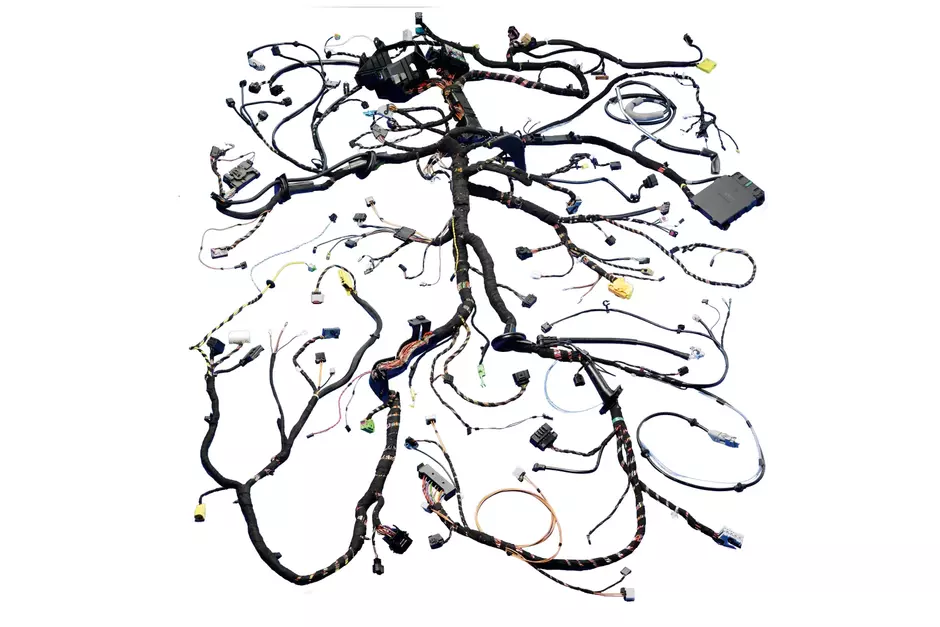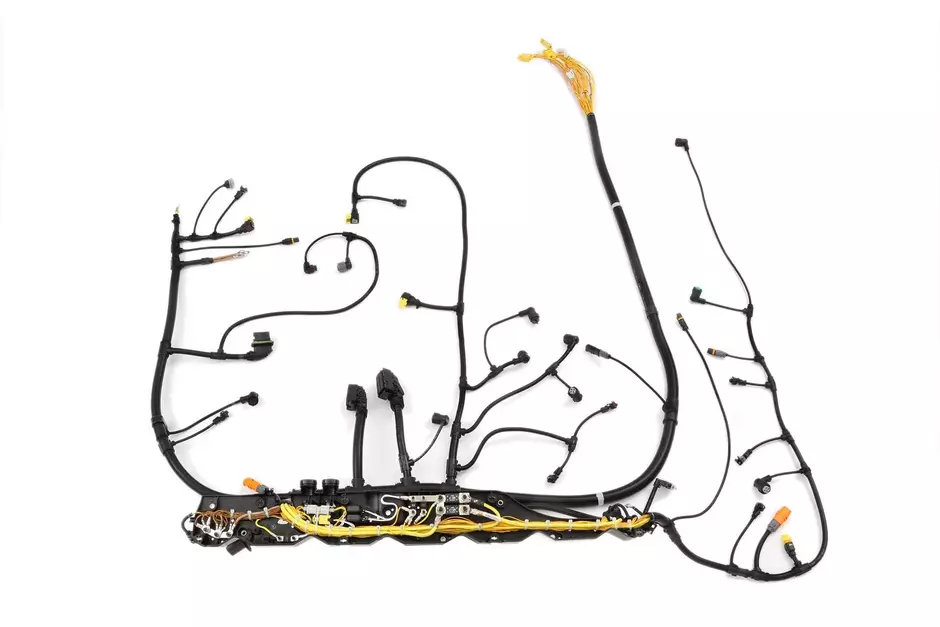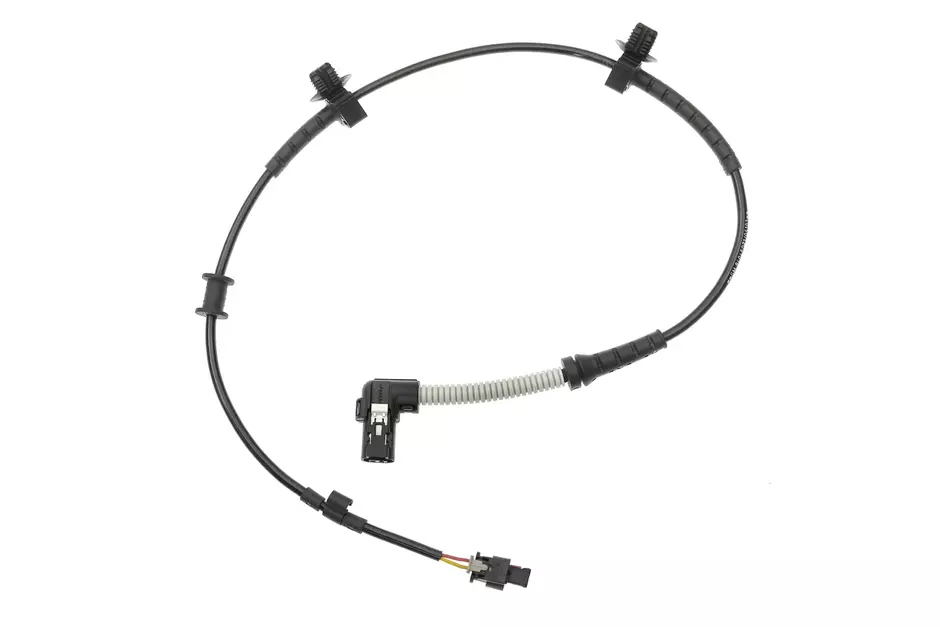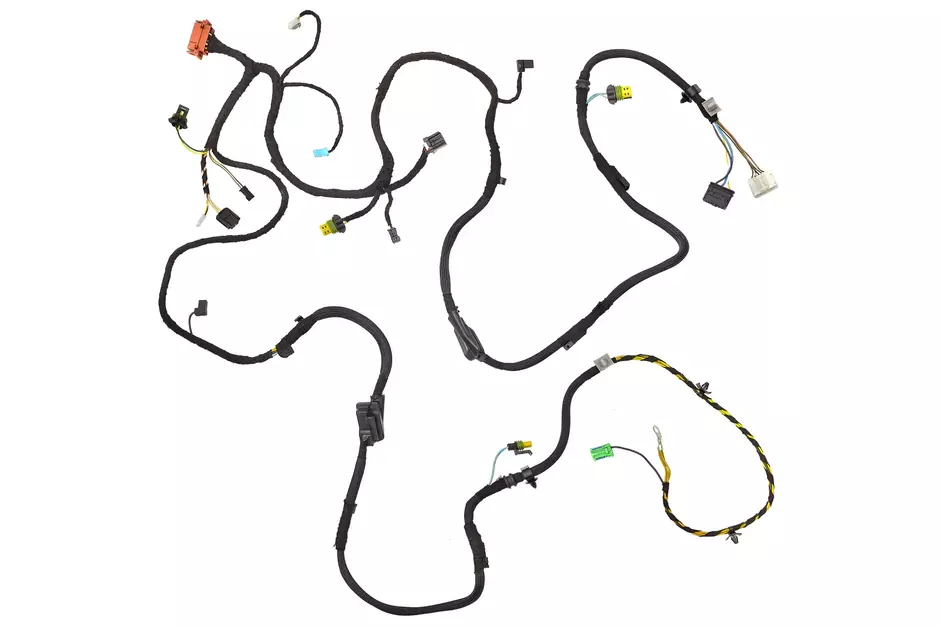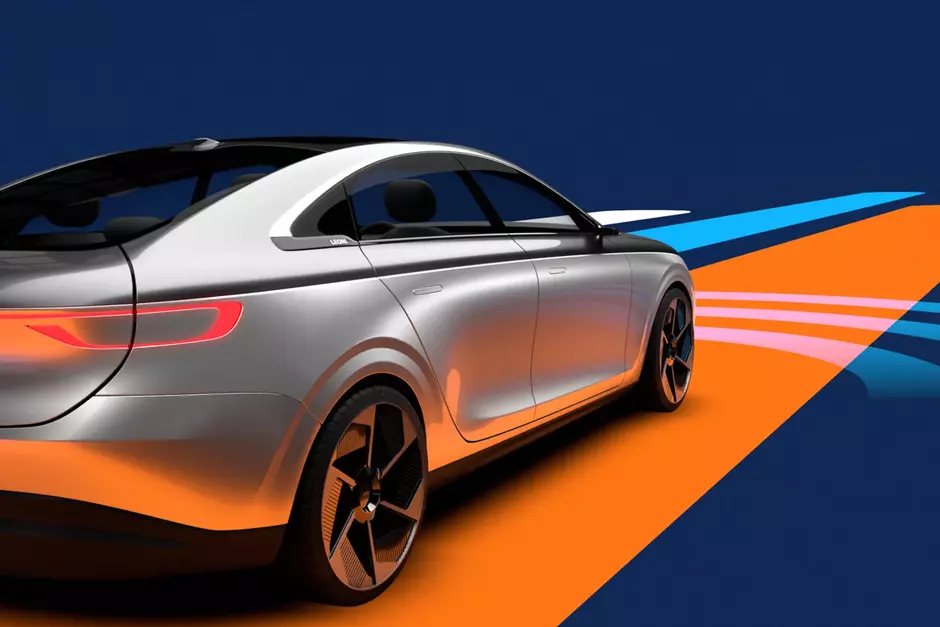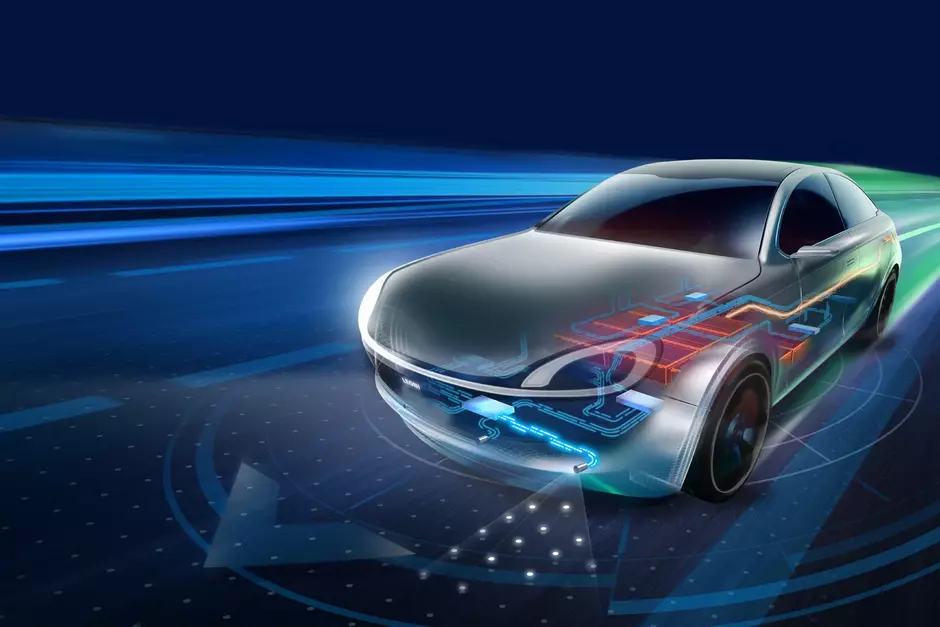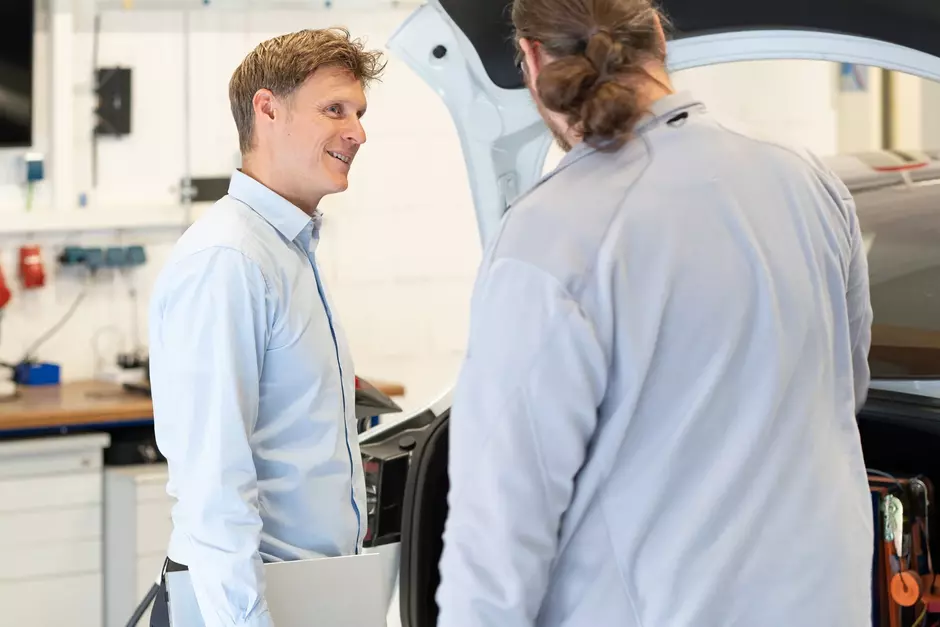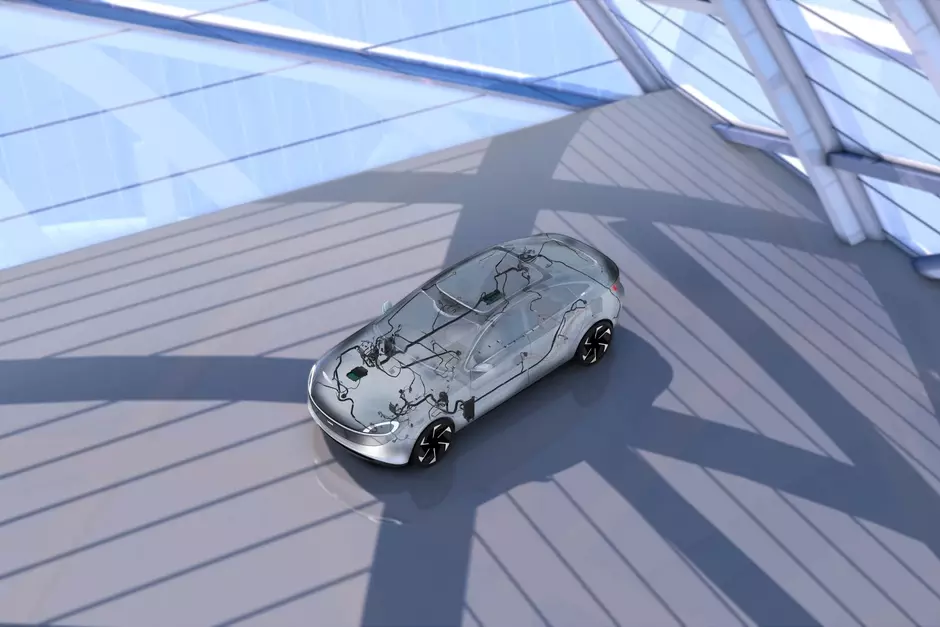
Low Voltage Wiring Harness
The central neural system of every car
The wiring harness is the central wiring system of every car. It is connected to all functions in the vehicle via power and data. The dimensionally stable, easy-to-install and space-saving wiring harnesses are also optimized with regard to the vehicle type: whether low-cost car or premium brand vehicle - they all have the wiring system in common.
Our products
Intelligent, responsive, integrated - all these terms define the evolving landscape of automotive zonal architecture. To reduce complexity, OEMs have moved to divide the main wiring harness into smaller zones - known as zonal harnesses. Each zone is connected via zone control units so that the physical and functional features are bundled in one area. The Zonal Harness ensures that each zone controller or auxiliary unit is supplied with power, signal and high-speed data. Depending on the customer and vehicle line, 3 to 5 zone control units are used, which connect the different cable harnesses of the individual zones. The smaller wiring harness, unlike a customized wiring harness, can be designed in one variant, which makes automated wiring harness production more likely. The main advantage is the replacement of longer cables and the reduced complexity due to space and weight reduction.
The facts at a glance:
- No customer-specific wiring harness required with corresponding advantages in production and logistics
- Enables weight and space optimization in the main zones
- High degree of modularization enables efficient production and assembly processes
If the engine and battery are the beating heart of a vehicle, the body harness is the complex wiring system that supplies the entire vehicle with power and signals. The vehicle's main wiring harness connects several control units and lights, actuators, motors and switches. It consists of cables ranging in size from 0.13 mm² to 16 mm² and more, as well as connectors with the corresponding contacts and seals, wires, plastic ducts and grommets. Cable clips or cable channels are used for installation in the car. In the future, the body wiring harness will be replaced by zonal wiring harnesses.
The facts at a glance:
- Weight reduction due to compact design
- Reliable thanks to reduced connections
- Tailored to customer requirements
- From the variant to the highly complex customer-specific wiring harness possible
Few environments in a motor vehicle can be considered as demanding as the engine compartment - an area of the vehicle exposed to high temperatures, wet and corrosive conditions and, in some cases, heavy impact from debris on the road. Under such working conditions, electrical systems need to be designed and manufactured to be particularly robust. The engine wiring harness, which carries critical electrical cables to and from the engine, is therefore designed for ruggedness in every respect. It connects all electrical engine sensors and actuators to the ECU or the main wiring harness. From the high-temperature resistant cables to the sealed connectors with heat-resistant plastic housings and the elaborate but lightweight sheathing - the engine wiring harness is a reliable, robust product that does its job in all weathers.
The facts at a glance:
- Withstands harsh environments (vibration, temperature, humidity)
- Tailor-made for small installation spaces
- Retaining elements can be cable channels or clips
- The cable harness can be foamed with PUR for protection and/or assembly purposes
In addition to the minor or engine harness, special cable harnesses for certain applications are also necessary, as the requirements, such as temperature resistance combined with high vibration requirements and mechanical loads - stone chipping, for example - can vary greatly. So-called technical sub harnesses are used here. These are characterized by the use of special processes to meet customer requirements. These include overmoulding, potting processes, foaming processes or surface preparation.
The fields of application for these processes include a wide range of products - from axle line sets to the AdBlue® Doser Harness, integrated sensor solutions or wiring harnesses in the transmission sector. Regardless of whether there are special requirements in terms of temperature and humidity, vibration, mechanical stress or chemical resistance: we reliably meet our customers' requirements with technical sub-harnesses.
The facts at a glance:
- Technical sub-harnesses are cable harnesses for special applications that are developed using special processes to meet customer requirements
- These processes include, for example, overmoulding, encapsulation, foaming processes, surface preparation and customized material selection
- As a result, requirements such as temperature and humidity, impermeability (IP class), vibration, mechanical stress (e.g. stone impact) and chemical resistance are met
While most electrical systems in a motor vehicle are supplied by larger, more complex wiring harnesses - such as the body harness - there are cases where smaller, more discrete wiring solutions are required. Certain components of a vehicle are assembled outside the main assembly line at the OEM in separate areas. These include doors, seats, axles, bumpers and the dashboard. Therefore, specific wiring harnesses need to be connected to the main wiring harness after the final assembly of the vehicle. Therefore, these smaller harnesses offer OEMs the flexibility to manage their vehicle assembly while ensuring continuity of the electrical system in the final assembled vehicle. The possible technical designs range from a simple, unsealed single connection to a high-temperature multicore cable with overmolded connectors. The weight can be up to 3.5 kg for a dashboard with 200 cables and 50 connectors. Mostly copper cables are used, often antenna cables are also included. There is a wide range of technical specifications.
The facts at a glance:
- Variant or customer-specific wiring harnesses
- A wide range of specifications can be covered
